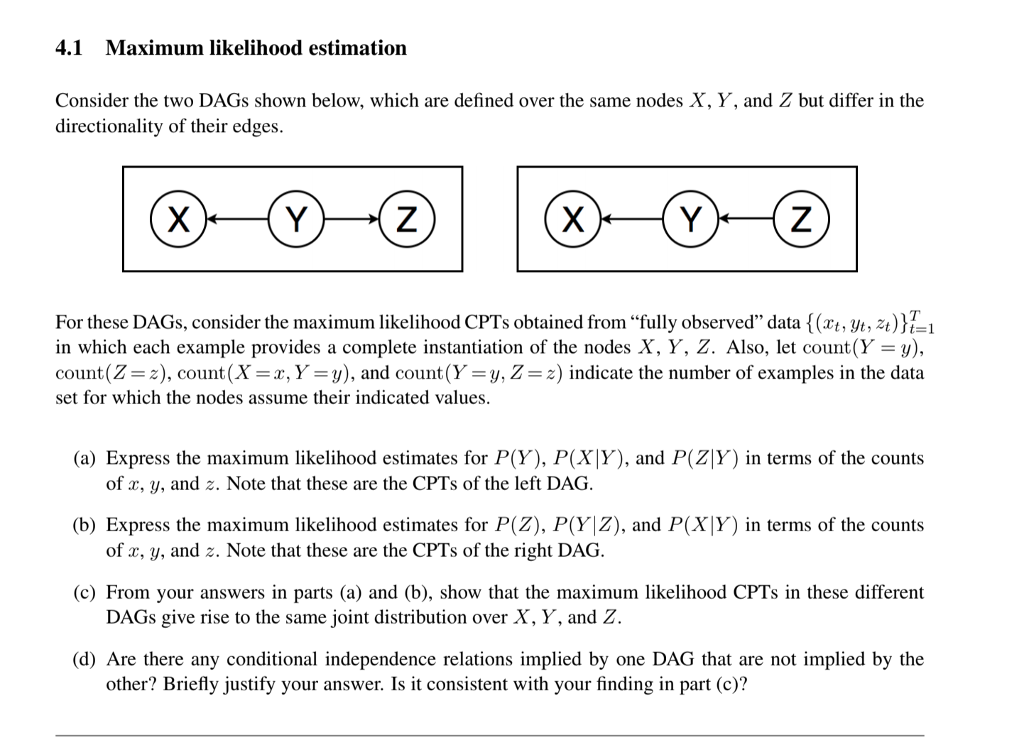
4.1 Maximum likelihood estimation Consider the two DAGs shown below, which are defined over the same nodes X, Y, and Z but differ in the directionality of their edges For these DAGs, consider the maximum likelihood CPTs obtained from "fully observed"data ((t ,)I in which each example provides a complete instantiation of the nodes X, Y, Z. Also, let count(Y = y). count (Z-2), count (X-r,Y-y), and count(Y-y, Z2) indicate the number of examples in the data set for which the nodes assume their indicated values (a) Express the maximum likelihood estimates for P(Y), P(XY), and P(ZY) in terms of the counts (b) Express the maximum likelihood estimates for P(Z), P(YZ), and P(X|Y) in terms of the counts c) From your answers in parts (a) and (b), show that the maximum likelihood CPTs in these different of x, y, and z. Note that these are the CPTs of the left DAG. of x, y, and z. Note that these are the CPTs of the right DAG. DAGs give rise to the same joint distribution over X, Y, and Z other? Briefly justify your answer. Is it consistent with your finding in part (c)? (d) Are there any conditional independence relations implied by one DAG that are not implied by the 4.1 Maximum likelihood estimation Consider the two DAGs shown below, which are defined over the same nodes X, Y, and Z but differ in the directionality of their edges For these DAGs, consider the maximum likelihood CPTs obtained from "fully observed"data ((t ,)I in which each example provides a complete instantiation of the nodes X, Y, Z. Also, let count(Y = y). count (Z-2), count (X-r,Y-y), and count(Y-y, Z2) indicate the number of examples in the data set for which the nodes assume their indicated values (a) Express the maximum likelihood estimates for P(Y), P(XY), and P(ZY) in terms of the counts (b) Express the maximum likelihood estimates for P(Z), P(YZ), and P(X|Y) in terms of the counts c) From your answers in parts (a) and (b), show that the maximum likelihood CPTs in these different of x, y, and z. Note that these are the CPTs of the left DAG. of x, y, and z. Note that these are the CPTs of the right DAG. DAGs give rise to the same joint distribution over X, Y, and Z other? Briefly justify your answer. Is it consistent with your finding in part (c)? (d) Are there any conditional independence relations implied by one DAG that are not implied by the







